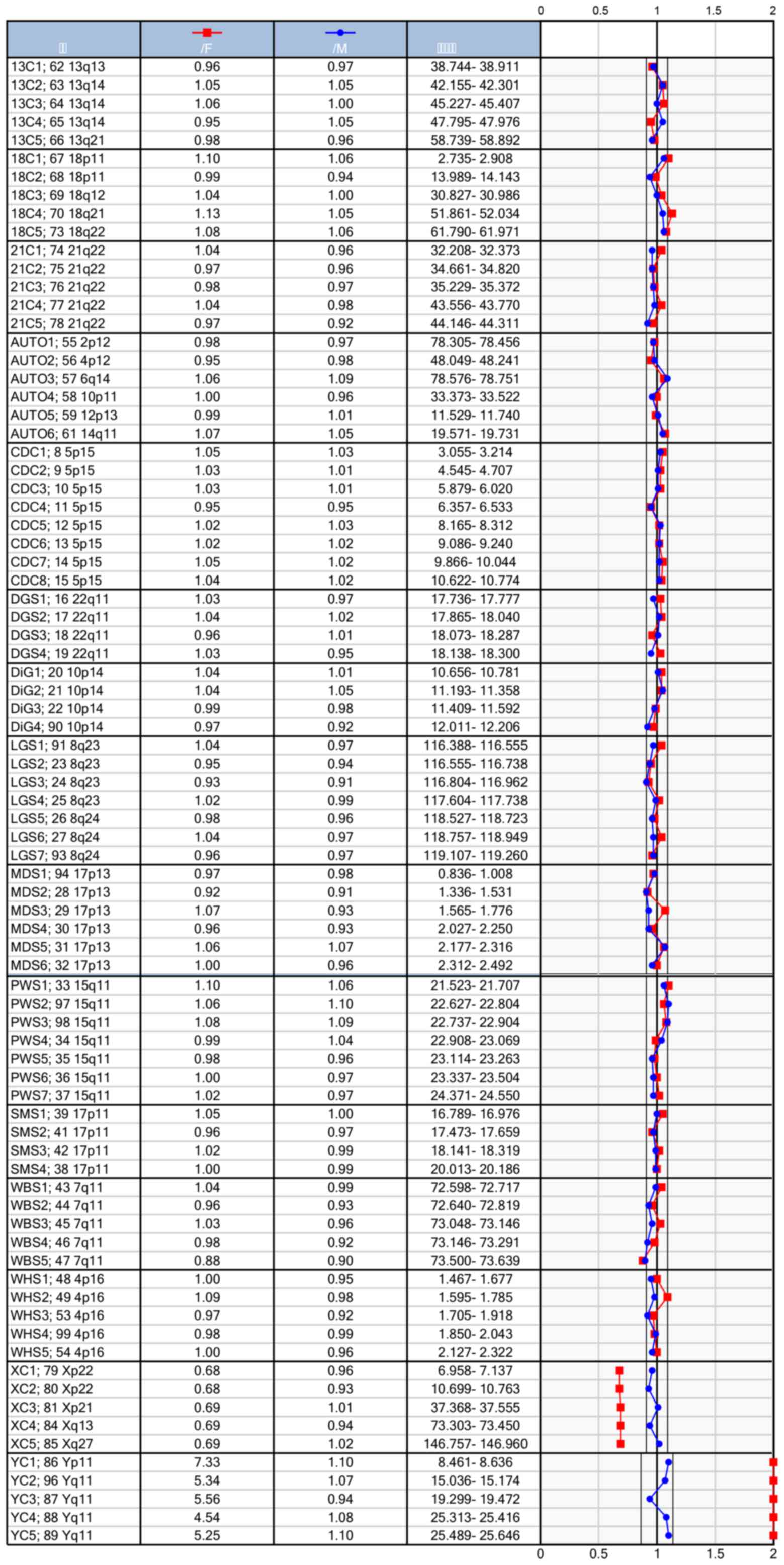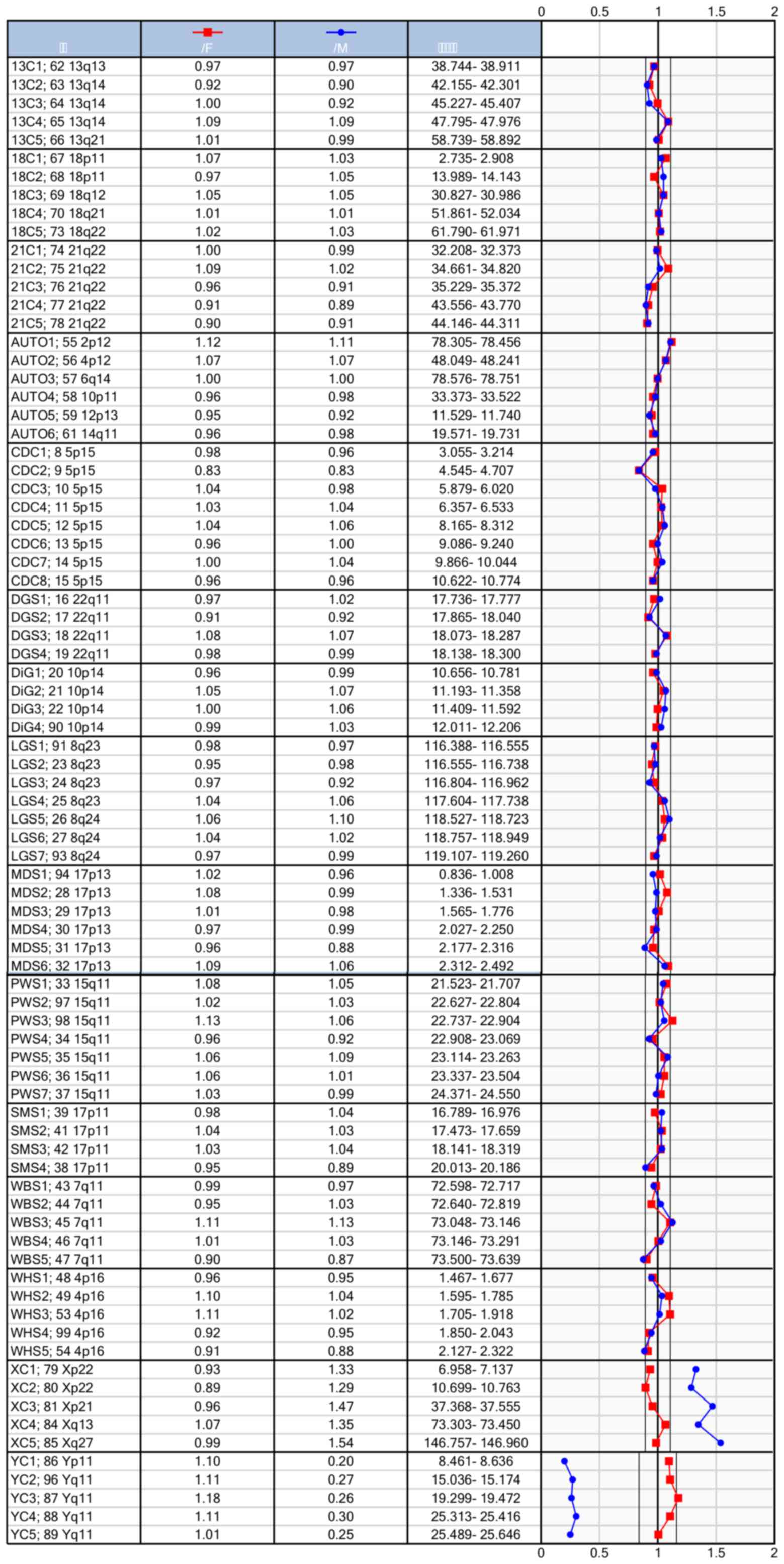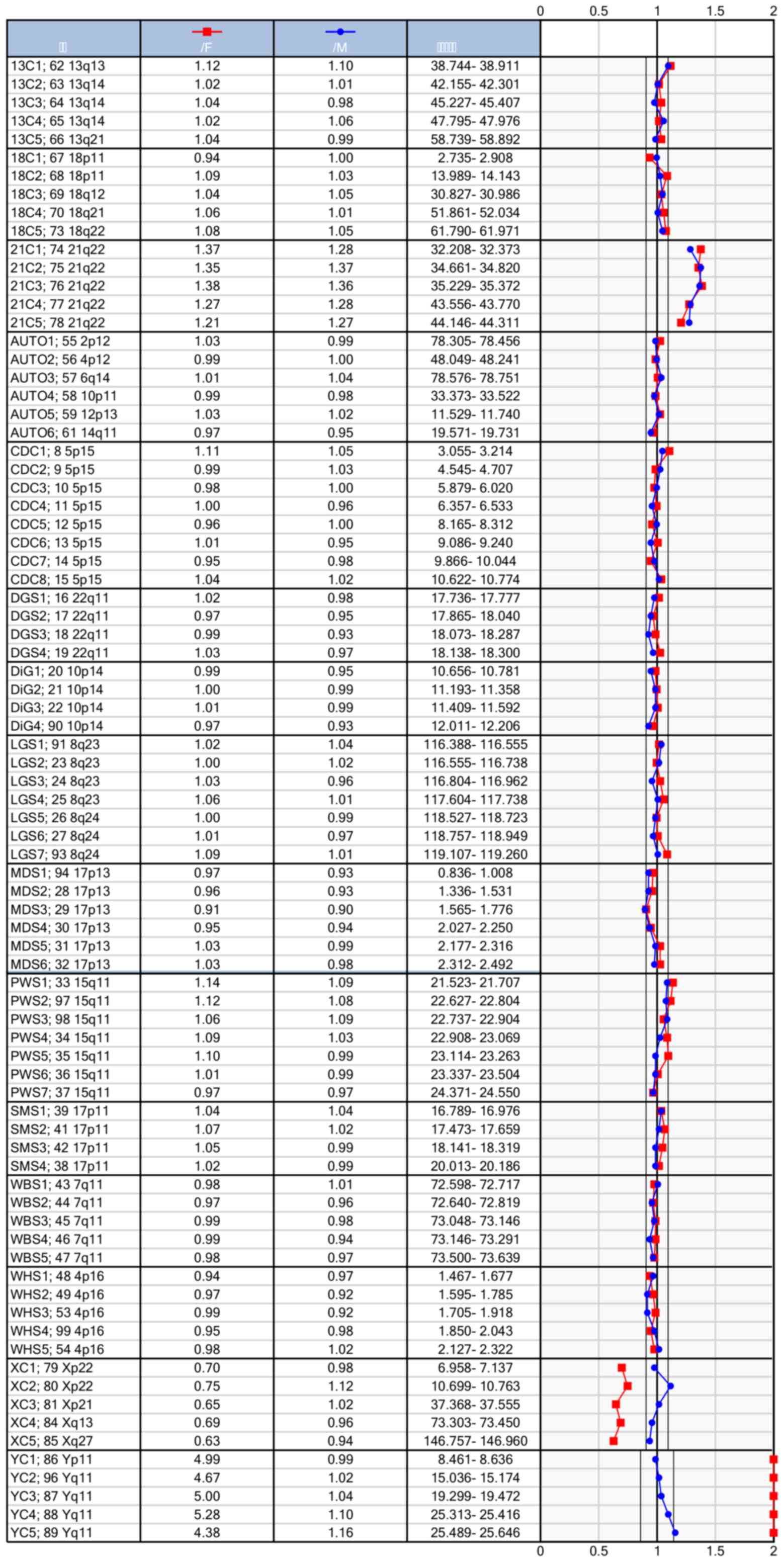|
1
|
Bianca I, Geraci G, Gulizia MM, Assenza
Egidy G, Barone C, Campisi M, Alaimo A, Adorisio R, Comoglio F,
Favilli S, et al: Consensus Document of the Italian Association of
Hospital Cardiologists (ANMCO), Italian Society of Pediatric
Cardiology (SICP), and Italian Society of Gynaecologists and
Obstetrics (SIGO): Pregnancy and congenital heart diseases. Eur
Heart J Suppl. 19 Suppl D:D256–292. 2017. View Article : Google Scholar : PubMed/NCBI
|
|
2
|
Pandya VK and Sutariya HC: Unilateral
multicystic renal dysplasia: Prenatal diagnosis on ultrasound.
Saudi J Kidney Dis Transpl. 28:916–920. 2017.PubMed/NCBI
|
|
3
|
Choy KW, Kwok YK, Cheng YK, Wong KM, Wong
HK, Leung KO, Suen KW, Adler K, Wang CC, Lau TK, et al: Diagnostic
accuracy of the BACs-on-Beads™ assay versus karyotyping for
prenatal detection of chromosomal abnormalities: A retrospective
consecutive case series. BJOG. 121:1245–1252. 2014. View Article : Google Scholar : PubMed/NCBI
|
|
4
|
Grati FR, Gomes Molina D, Ferreira JC,
Dupont C, Alesi V, Gouas L, Horelli-Kuitunen N, Choy KW,
García-Herrero S, de la Vega AG, et al: Prevalence of recurrent
pathogenic microdeletions and microduplications in over 9500
pregnancies. Prenat Diagn. 35:801–809. 2015. View Article : Google Scholar : PubMed/NCBI
|
|
5
|
Marcato L, Turolla L, Pompilii E, Dupont
C, Gruchy N, De Toffol S, Bracalente G, Bacrot S, Troilo E, Tabet
AC, et al: Prenatal phenotype of Williams-Beuren syndrome and of
the reciprocal duplication syndrome. Clin Case Rep. 2:25–32. 2014.
View Article : Google Scholar : PubMed/NCBI
|
|
6
|
Rosenfeld JA, Morton SA, Hummel C,
Sulpizio SG, McDaniel LD, Schultz RA, Torchia BS, Ravnan JB,
Ellison JW and Fisher AJ: Experience using a rapid assay for
aneuploidy and microdeletion/microduplication detection in over
2,900 prenatal specimens. Fetal Diagn Ther. 36:231–241. 2014.
View Article : Google Scholar : PubMed/NCBI
|
|
7
|
Mei J, Wang H and Zhan L: 10p15.3p13
duplication inherited from paternal balance translocation
(46,XY,t(5;10)(q35.1;p13)) identified on non-invasive prenatal
testing. J Obstet Gynaecol Res. 43:1076–1079. 2017. View Article : Google Scholar : PubMed/NCBI
|
|
8
|
García-Herrero S, Campos-Galindo I,
Martínez-Conejero JA, Serra V, Olmo I, Lara C, Simón C and Rubio C:
BACs-on-Beads technology: A reliable test for rapid detection of
aneuploidies and microdeletions in prenatal diagnosis. BioMed Res
Int. 2014:5902982014. View Article : Google Scholar : PubMed/NCBI
|
|
9
|
Choy RK, Chen Y, Sun XF, Kwok YK and Leung
TY: BACs-on-beads: A new robust and rapid detection method for
prenatal diagnosis. Expert Rev Mol Diagn. 14:273–280. 2014.
View Article : Google Scholar : PubMed/NCBI
|
|
10
|
Piotrowski K, Halec W, Wegrzynowski J,
Pietrzyk A, Henkelman M and Zajaczek S: Prenatal diagnosis of
Langer-Giedion Syndrome confirmed by BACs-on-Beads technique.
Ginekol Pol. 85:66–69. 2014. View
Article : Google Scholar : PubMed/NCBI
|
|
11
|
Ragni MV: Prenatal diagnosis by droplet
digital PCR. Blood. 130:240–241. 2017. View Article : Google Scholar : PubMed/NCBI
|
|
12
|
Łaczmańska I and Stembalska A: New
molecular methods in prenatal invasive diagnostics. Ginekol Pol.
84:871–876. 2013.(In Polish). View
Article : Google Scholar : PubMed/NCBI
|
|
13
|
Baxter L and Adayapalam N: A comparative
study of standard cytogenetic evaluation and molecular karyotyping
for products of conception. Diagn Mol Pathol. 22:228–235. 2013.
View Article : Google Scholar : PubMed/NCBI
|
|
14
|
Kiiski K, Roovere T, Zordania R, von
Koskull H and Horelli-Kuitunen N: Prenatal diagnosis of
17p13.1p13.3 duplication. Case Rep Med. 2012:8405382012. View Article : Google Scholar : PubMed/NCBI
|
|
15
|
Piotrowski K, Henkelman M and Zajaczek S:
Will the new molecular karyotyping BACs-on-Beads technique replace
the traditional cytogenetic prenatal diagnostics? Preliminary
reports. Ginekol Pol. 83:284–290. 2012.(In Polish). PubMed/NCBI
|
|
16
|
Vialard F, Simoni G, Gomes DM, Abourra A,
De Toffol S, Bru F, Romero Martinez MC, Nitsch L, Bouhanna P,
Marcato L, et al: Prenatal BACs-on-Beads™: The prospective
experience of five prenatal diagnosis laboratories. Prenat Diagn.
32:329–335. 2012. View
Article : Google Scholar : PubMed/NCBI
|
|
17
|
Popowski T, Vialard F, Leroy B, Bault JP
and Molina-Gomes D: Williams-Beuren syndrome: The prenatal
phenotype. Am J Obstet Gynecol. 205:e6–e8. 2011. View Article : Google Scholar : PubMed/NCBI
|
|
18
|
Shaffer LG, Coppinger J, Morton SA,
Alliman S, Burleson J, Traylor R, Walker C, Byerly S, Lamb AN,
Schultz R, et al: The development of a rapid assay for prenatal
testing of common aneuploidies and microdeletion syndromes. Prenat
Diagn. 31:778–787. 2011. View
Article : Google Scholar : PubMed/NCBI
|
|
19
|
Fox KA and Lee W: Prenatal diagnosis and
evaluation of abnormal placentation. Clin Obstet Gynecol.
60:596–607. 2017. View Article : Google Scholar : PubMed/NCBI
|
|
20
|
Salvador Llorens R, Sainz Viegas A,
Filardi Montoya A, Fornas Montoliu G and Serrano Menor F:
Evaluation of the fetal cerebellum by magnetic resonance imaging.
Radiologia. 59:380–390. 2017.(In English, and Spanish). PubMed/NCBI
|

















